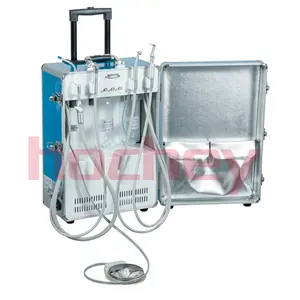
MT Medical Equipment Dental Equipment Suitcase CE Approved Dental Equipment Mobile Suction Unit Portable Dental Unit


New arrival CP-1 COXO dental air polisher prophy jet / Sandblasting dental prophy mate airflow with 2 nozzles for subgingival










Dental airflow technology represents a significant advancement in oral hygiene, offering a method for airflow teeth cleaning that is both efficient and effective. This technique utilizes a stream of air, water, and fine powder to gently remove plaque, stains, and soft deposits from teeth, promoting a healthier oral environment.
The versatility of dental airflow devices is evident in their various forms, including electric, manual, and hybrid models. Each type is designed to cater to the specific needs of dental professionals and patients alike. In clinical settings, such as hospitals and dental clinics, these devices play a crucial role in airflow dental hygiene, enhancing the standard teeth cleaning process with precision and care.
Airflow dental cleaning systems are equipped with intuitive machine displays, allowing for real-time monitoring and adjustment of settings. This feature ensures a tailored cleaning experience that is both reliable and user-friendly. The design of these systems focuses on ease of use, with additional features that may include adjustable pressure settings and ergonomic handpieces, which contribute to their growing popularity among hygienist airflow practitioners.
The construction of dental airflow equipment is a critical aspect, often involving durable materials that can withstand the rigors of frequent use. The design of these devices is typically compact and efficient, allowing for seamless integration into the dental practice workflow. Attention to build quality ensures that these devices can provide consistent performance in airflow cleaning teeth procedures.
Selecting the appropriate dental airflow system requires consideration of several factors, such as the type of bleaching agent used and the specific needs of the dental practice. For instance, air flow dental cleaning systems may vary in their capabilities, with some offering more advanced features for complex cleaning tasks. It is essential to assess the requirements of both the dental professionals and patients to find a suitable match.
In conclusion, the integration of dental airflow technology into dental practices marks a step forward in oral care. With options ranging from airflow ems to manual systems, dental professionals can enhance their service offerings, ensuring that patients receive thorough and gentle cleaning experiences. As the demand for advanced oral care solutions grows, the role of dental airflow in maintaining dental health continues to expand.